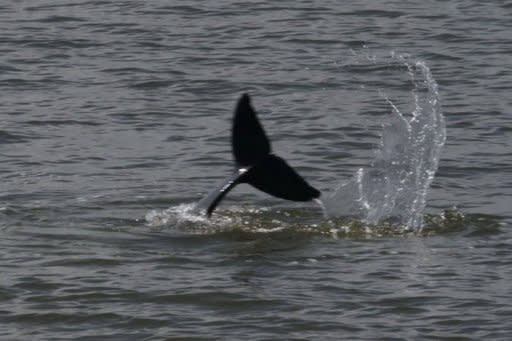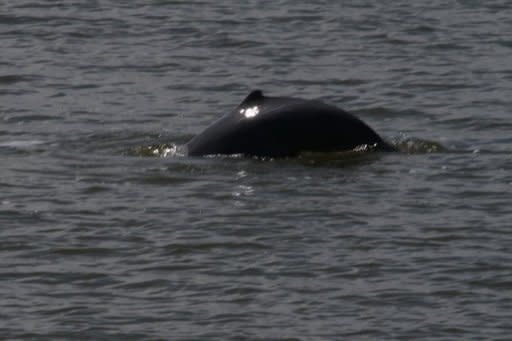18 endangered dolphins spotted off Borneo: WWF
Conservation group WWF said it spotted 18 critically endangered Irrawaddy dolphins in Indonesian waters off Borneo island Tuesday and called for greater protection of the species' habitat. There is little data on the Irrawaddy dolphin -- which resembles the common bottlenose dolphin but has no beak and a snub dorsal fin -- and no comprehensive survey has been conducted to measure its global population. "In the past, locals and fishermen reported seeing the dolphins, but we have never recorded them until now," WWF conservation biologist Albertus Tjiu told AFP. Over five days a research team surveyed 260 kilometres (160 miles) along the coast of West Kalimantan, on Indonesia's half of Borneo island, and spotted the species travelling in small groups. The sightings show that the dolphins' habitat is still intact, despite degradation by hundreds of pulp and charcoal plantations by the coast, Tjiu said. The team also encountered three Indo-Pacific humpback dolphins that live in the same type of ecosystem. The two dolphin species live in biodiverse mangroves -- estuaries of dense tropical trees or shrubs that grow along coastal sediment, resembling muddy swampland. Mangroves have a distinct vegetation that, like peatland forests, can take thousands of years to fully form. "We call on all businesses operating in the area to act sustainably to conserve the mangroves. We expect to discover more dolphins when we finish the study," Tjiu said. Critically endangered Irrawaddy dolphins have been recorded in the Mekong River in Cambodia; the Ayeyawardi River in Myanmar and the Mahakam River of East Kalimantan. Populations of Irrawaddy dolphin in other areas are categorised as vulnerable. In 2009, biologists recorded the world's biggest Irrawaddy dolphin population of around 6,000 in Bangladesh. Prior to that it was believed only hundreds existed. Irrawaddy dolphins, like many other marine species, often die entangled in fishing nets and in crab traps, as well as from electric fishing. Mangroves, which also offer natural flood protection from rising sea levels, are under threat of unsustainable agriculture and climate change. Indonesia is home to some of the most biodiverse forest and marine ecosystems. Rampant land conversion for paper and palm oil plantations, among others, has destroyed swathes of land, particularly in Kalimantan.



